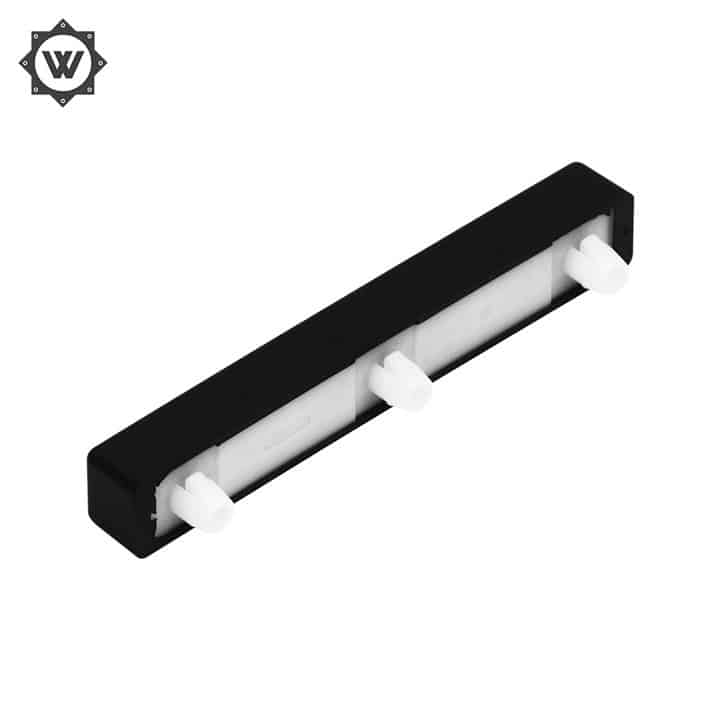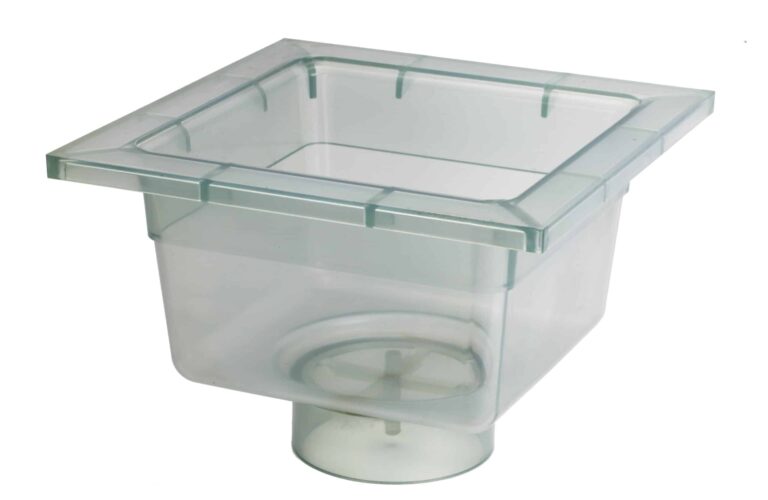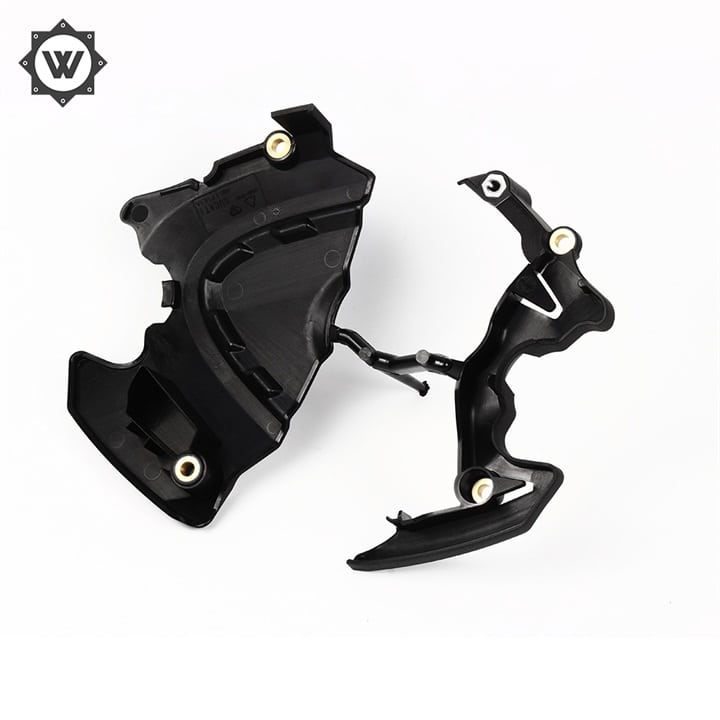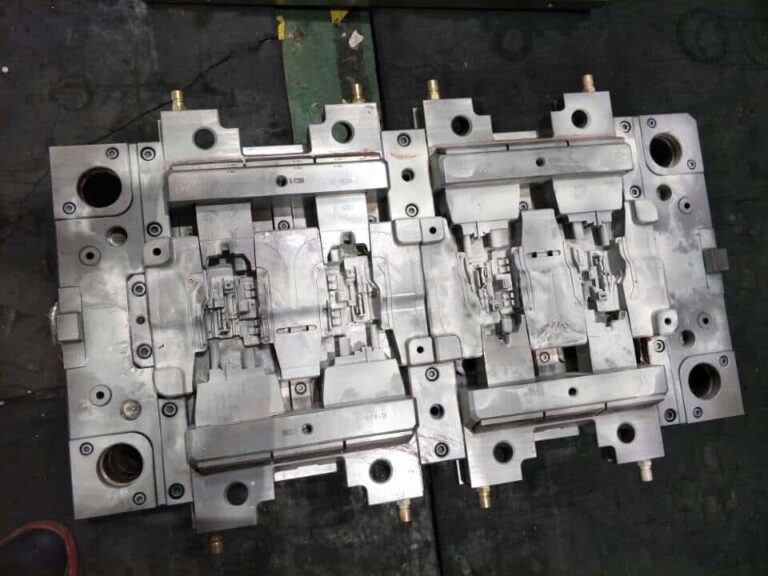TPE covered PC material characteristics molding process and application knowledge
I. Concept of TPE coated PC
TPE is a rubber-modified material with rubber elasticity, which can be easily molded by injection or extrusion. The rubber hardness range can be adjusted from 0 to 100 degrees in ShoreA. The hardness range of TPE for PC overmolding is 30~90 degrees, and the appearance is natural or translucent. It has excellent abrasion resistance and good bonding with PC, and the products made by it feel comfortable and smooth.

Second, the performance requirements of the TPE material for PC overlay
1. Excellent adhesive properties
(1) Coating mechanism
TPE should be able to be firmly bonded to PC plastic by injection molding. The mechanism of overmolding bonding is that TPE and PC should have close molecular polarity or solubility parameters, which is conducive to the penetration of the two materials at the molecular level, and under suitable injection molding temperature conditions, TPE gets enough energy to be compatible with PC polymer at the molecular level (penetration) at the microscopic level. At the macroscopic level, TPE and PC are firmly bonded together by high temperature fusion and are difficult to be torn apart.
2) Suitable TPE blends
As mentioned above, TPE must have close molecular polarity with PC. But in fact, conventional TPE is non-polar and PC is weak to medium polarity. This requires polar modification of the TPE so that it can be close to the polarity of PC. To find a TPE (TPR) material that can be well coated with PC, it is not possible to find a random TPE material in the market that can meet the requirements. Rather, we need a professional TPE manufacturer to provide a TPE compound with a special blending system.
2. Determination of hardness
Users to do a cover PC products, the hardness of TPE has a more certain requirements, this hardness can be provided by the user to provide physical properties table or provide OK sample to confirm. We can provide TPE with hardness 25~90A, which can be firmly bonded to PC material.
3. Surface scratch resistance requirements
For different products, there are different requirements for the surface scratch resistance of TPE material. This need to confirm with the user communication, if the user can provide physical OK sample, it is the best.
4. Other performance requirements
Some special product applications, the requirements for TPE is more unique, Plastic Bo listed below some of the special requirements for TPE situation
A. Transparency
Some electronic products with visibility requirements, the need for TPE materials with high transparency.
B. Toughness and elasticity
Some buttons and caps have high requirements for the toughness and resilience of TPEs.
C. Flame retardant
Some electronic components accessories, wires and plugs products, the TPE for the encapsulation of PC has certain flame retardant requirements.
D. Easy processing and molding
Some wrapping surface larger products, require TPE has good fluidity, in order to facilitate the smooth wrapping.
Some cases of flat cladding, inverted product cladding, require TPE to provide good support in terms of mold release.
Three, molding methods and main process parameters
1. Molding equipment and processing method
There are two types of molding equipment for TPE and PC overmolding.
One is to use the ordinary injection molding machine. Open two sets of molds (PC parts injection mold and TPE overmold). First inject the PC plastic parts, then take out the PC parts and put them into another set of overmolding molds and secondly inject the TPE soft rubber. If there is only one injection molding machine, the PC parts processing mold will also be replaced with another set of overmold, and the PC plastic parts will be placed into the overmold manually (or by robot) to inject TPE into the surface of PC parts.
The second is a special two-color injection molding machine. Two-color injection molding machine has two or more injection barrels and screw plasticizing injection device, and in the same mold, by rotating the die head to quickly achieve two or more injection, without taking out the plastic parts into another set of molds to overmold, thus greatly reducing molding time and improving processing efficiency.
2. Molding process parameters
Mold temperature is generally set at 30~50℃; injection pressure and screw speed are generally not rigidly specified, as different equipment varies greatly, the actual adjustment of the appropriate parameters shall prevail; injection temperature, which is a small range, generally at 190~230℃, rubber material characteristics and equipment is an important factor.
Fourth, common processing defects analysis.
1. Sticky mold
Causes: mold design or TPE rubber formula; solutions: modify the mold and adjust the formula.
2. Water lines
Reason: bad exhaust, low injection temperature; Solution: improve exhaust, increase injection temperature.
3. TPE and PC adhesion is not good
Reason: TPE formula; molding temperature, solution: adjust the TPE formula; molding temperature adjustment
4. TPE easy to scratch, white
Reason: TPE formulation; Solution: adjust TPE formulation.
5. TPE surface gloss is poor, with pockmarked surface
Reason: not baked material, low injection temperature, insufficient plasticization; solution: bake material, increase injection temperature.
6.TPE lack of glue
Reason: low injection processing temperature; insufficient injection pressure; poor fluidity of TPE material
Solution: Increase the injection temperature; increase the injection pressure; adjust the TPE formula to improve its fluidity.
7.TPE overmolding deformation
Reason: Unload the mold before it is completely cooled and shaped after overmolding
Solution: Strengthen the cooling capacity of the mold and extend the clamping time appropriately.
V. Main applications of TPE coated PC
TPE covered PC, the main application areas or products are as follows.
Power tools, electric drills and other handles, game consoles, notebooks, Ipad stands, cell phone cases, smart bracelets (wristbands), multimeters, walkie-talkies and other electronic products.






